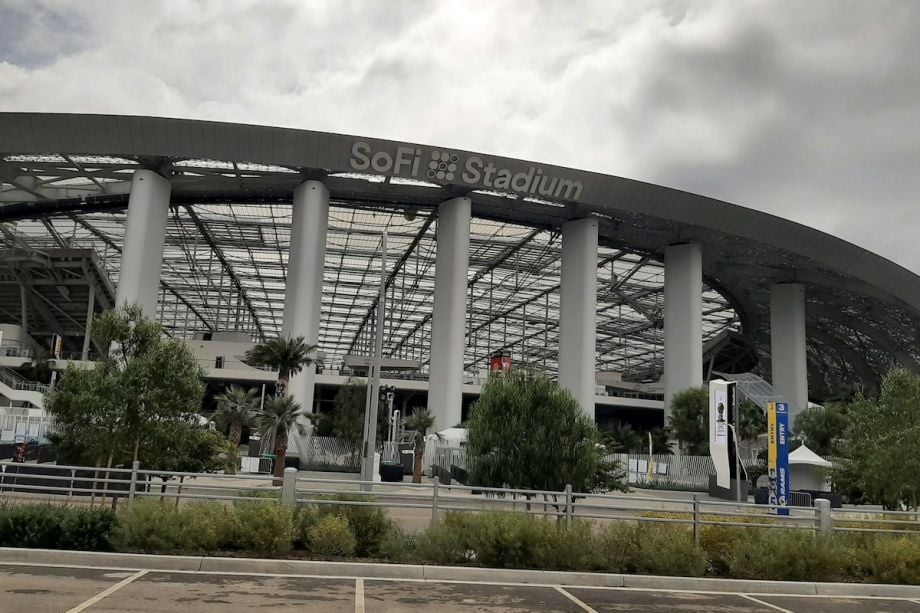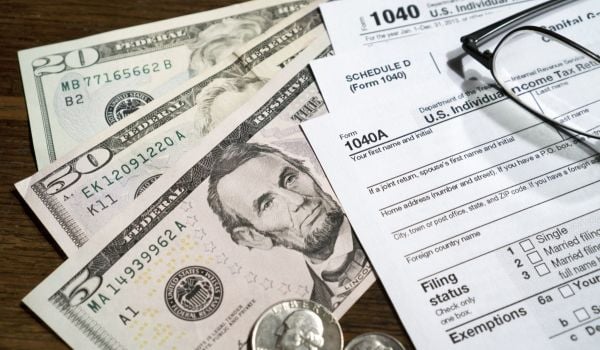I was raised in Inglewood, California, a community that was vibrant and comfortable, despite being hypersegregated. Just south of Los Angeles, the city was home to one of the largest swaths of Black homeowners on the West Coast with little help from L.A. County.
Then Stanley Kroenke, the billionaire sports investor and real estate magnate who owns the L.A. Rams, came back to town.
Kroenke had come once before, when he attempted to build a Wal-Mart in our city. We successfully told him to leave. But in 2014, he came back with a vision for a massive football stadium, and he imported outsider “skinfolk” to champion him. And he won.
SOFI Stadium opened in 2020 and hosted both Beyonce and Taylor Swift’s world tours this summer. (And just a few minutes away, the 17,700-seat Intuit Dome is set to open later this year.) It’s no secret that I’m not a fan of stadiums and their public giveaways of valuable taxes; as an urbanist, I find football stadiums a wasteful use of resources in their current economic formation. While SOFI brags that it was entirely privately funded, that is – to put it politely – not exactly true. Its developers expect to recoup up to $100 million in local tax dollars in just the first five years of operation, the AP reports.
Most recently, the Federal Transit Administration has agreed to provide the City of Inglewood with a $1.6 billion capital grant for the Transit Connector, a monorail connecting the Metro K line to the SOFI Stadium. Los Angeles transportation infrastructure, whether it is a freeway or a train, is constructed and financed with tax dollars. All of its residents should benefit financially, as we all pay for the public infrastructure that keeps our economy moving. Instead, SoFi Stadium is America’s second-highest grossing venue, with more than $107 million in gross revenue as of 2022 — and Inglewood residents are being left behind.
When SOFI Stadium needed a system for people to get to the venue, $1.6 billion in funding seemingly magically appeared. But it’s not magic: It’s the people’s money. And there are mechanisms, however underutilized, to spend that money on the public rather than private developers. Land value capture gives us the financial tools to support commercial property owners in sharing their good fortune with the people who pay for their roads and trains.
Breaking the investment-displacement cycle
My neighborhood is being gentrified. Gentrification, we know, typically leads to improved infrastructure. But we also know the value of that infrastructure often cannot be accessed by the original residents of these formerly hypersegregated neighborhoods, often low-income and minority families. Statistics show historically-excluded, hypersegregated members of communities are disproportionately pushed out during gentrification.
In my neighborhood, the new infrastructure includes the reopening of the Morningside Park Library (my childhood library, which the community had been asking for over a decade to reopen), enhanced public facilities and transit upgrades (such as the monorail to SOFI Stadium). These investments enhance the quality of life of future residents, but they’re paid for by the tax dollars of the residents being pushed out.
Here’s how the situation typically plays out: A rich person notices a location in a historically excluded community. The private interest goes to the local government. Publicly funded infrastructure improves the area, which often involves resident removal through denial of jobs and increase of police presence, as well as publicly supported problematic finance vehicles like TIFs and later private investment. The profit goes almost entirely into the private investor’s pocket, as if they did it all alone.
That cycle can be broken at the beginning if we stop creating hypersegregated communities that are excluded from public infrastructure – and if we move toward creating inclusive communities that, from the outset, institute value capture on unearned profit by commercial entities, gained from publicly financed infrastructure.
If you want to make inclusive communities you must respect the public space, publicly funded projects — and the public. Building and maintaining roads, internet service, water and power are not minor investments. They are extensive public works projects. They are investments in our society that all workers pay for and commercial landlords should also support. As Winston Churchill once noted, “Roads are made, streets are made, services are improved, electric light turns night into day — and all the while the landlord sits still.”
How to capture investment for the public
Nobel Prize-winning economist Joseph Stieglitz’s Henry George Theorem states, in simple terms, that land value increases with public infrastructure expenditure — and that since the netted income gained by the private commercial owner is unearned, it should be shared with the community.
Through land value capture, we can take a portion of the value that is gained through the public investment of infrastructure and give it to the people. That netted unearned income can be used to finance schools, affordable housing, or a slew of other democratically chosen initiatives. Capturing the land value will also help lessen the boom-and-bust cycles in land values and reduce sprawl, promoting more efficient land use by developers.
If, say, the SOFI Stadium hosts the FIFA World Cup in 2026, one group of economists has projected that “the estimated economic impact will be two-thirds greater than the $356 million delivered by Super Bowl LVI that was held at SoFi Stadium in 2022.”
That’s in no small part owing to the already publicly funded projects as well as projected future projects that are publicly funded, such as the $1.6 billion investment in the monorail. A portion of the revenue that SOFI Stadium and other commercial entities around the stadium would receive is unearned; it exists owing to the roads that are publicly financed, the internet that has been enhanced with public dollars, and the public transit that carries people there. That unearned revenue should be shared with L.A. County and the City of Inglewood.
To do so, there are a suite of policy options that have been proven to benefit the public, including land banking, land leasing and land readjustments. Another underappreciated instrument is linkage fees, an effective cost-recovering method. Like development impact fees, they are levied by local governments on new development, but they also consider indirect effects of the community associated with development. A local government can vote to impose these fees on developments to augment funds to offset the negative impacts of the development. Those fees can be set aside to fund affordable housing and analogous purposes: education, public space enhancement, like pedestrian infrastructure improvements, capital construction projects and more. In Somerville, Massachusetts, for example, commercial developments over 15,000 square feet are subject to a $2.93 per square foot linkage fee which funds Somerville’s Jobs Creation and Retention Trust.
Another powerful method is incentive zoning. Though zoning has traditionally been used as a practice to enthrall the working class, a community could use zoning with land value capture for the common good. Right next to Somerville, the city of Cambridge has a 100% Affordable Housing Overlay zone – an exemplary model for how to use planning and economic tools to bring about true social equity and change. With AHO, affordable housing is mixed-income and included in an entire area where development is occurring, so hypersegregated excluded communities don’t get reconstructed elsewhere. Developers can provide infrastructure or contribute funding.
UCLA Emeritus Professor Donald Shoup, who researches urban land economics and public finance, discusses the idea of land value capture through parking districts in his seminal book “The High Cost of Free Parking.” He suggests that municipalities remove the public subsidy of the private enterprise that is free parking — and that they should instead send 100% of the funding to street projects.
It’s not much different than the idea behind Business Improvement Districts, or BIDS. Given that the SOFI Stadium is being publicly subsidized by this billion-dollar grant, the surrounding community should benefit.
Capturing that value can serve as a source of revenue that finances housing for middle-income workers near public transit, increases public transit access, and makes riding a bicycle and walking reasonable options. This people’s budget can be targeted to benefit the working and middle class, whose low salaries make it impossible for them to live close to public transit or save a down payment for a home. New York City constructed Co-op City as a development for 50,000 low and middle-income workers; Los Angeles could make its dysfunctional density more rational with this style of development.
Land value capture can be managed with a revitalized California Redevelopment Agency (CRA) with a mission that is markedly different from the prior iteration. Its focus must be long-term and regional across Southern California, rather than hopscotching across political boundaries. “Fixing” so-called blight by inadvertently pushing out residents and driving sprawl owing to the support of bad policy that focuses on the wealthy and their private developments. A new CRA can be transparent and democratic, using the unearned profit of commercial entities to reimagine a Metro Los Angeles and SoCal region that focuses on its people and its functional boundaries.
Public infrastructure allows Los Angeles to live; Los Angeles stops working without its public infrastructure and public works. But for Los Angeles to be fair to its working class, it needs to figure out a way to share its wealth and wonder with all of Los Angeles.
Land value capture offers us a suite of tools through which we can limit sprawl and build a Metro Los Angeles where the wealth we all create is shared.
This article is part of The Bottom Line, a series exploring scalable solutions for problems related to affordability, inclusive economic growth and access to capital. Click here to subscribe to our Bottom Line newsletter.
L. Lo Sontag is the Inaugural Sadie T.M. Alexander Economics Fellow at The New School. She was the 2021-2022 Ethic and Equity Fellow at the Lincoln Institute of Land Policy. She is currently working on a documentary about sprawl.






_920_518_600_350_80_s_c1.jpg)











